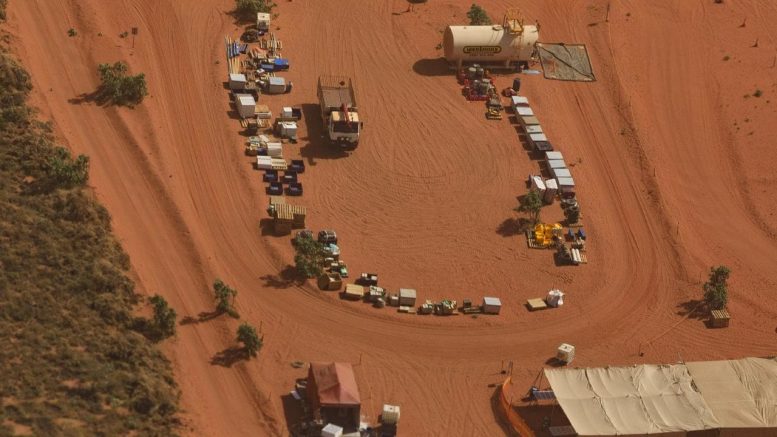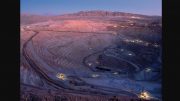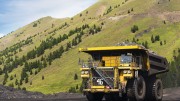As 2018 draws to a close, one of the more intriguing exploration stories of the year is shaping up in the Paterson province in a remote part of Western Australia’s Great Sandy Desert — east of the Pilbara region’s better-known iron ore district.
Due to extensive sand dunes and other unconsolidated cover, the Paterson province is relatively underdeveloped, compared to the iron fields to the west. Nevertheless, the Paterson province hosts two of Australia’s biggest mines: Newcrest Mining’s Telfer gold-copper-silver mine and Metals X’s Nifty copper mine.

Gravity map of Western Australia, highlighting Paterson province. Credit: Greatland Gold.
Because Rio Tinto is such a huge company, its grassroots exploration successes generally aren’t big enough to warrant being revealed in the company’s public disclosure, unless there is some kind of public-relations payoff.
In the case of its copper-gold exploration activities in the Paterson province, Rio Tinto has been officially silent on the issue, and so keen observers have had to be a little creative in inferring just what the supermajor is up to in eastern Pilbara.
Rio Tinto first raised flags over the past year by adding tenfold to its landholdings in the area — applying for almost 30 exploration licences.
Sleuths in the Australian media and mining community have pored over satellite images taken of Rio Tinto’s ground at Paterson and deduced a major drilling program has been underway since 2017, with a 40-person camp set up and drill rigs moved in that are large enough to drill the deepest holes.
With satellite images refreshed every five or six days and no concealing vegetation, observers can see drill spacing proceeding at 200-metre intervals, with selective, 100-metre spacing.
Those suspecting something large is afoot saw more evidence in Rio Tinto’s recent application to build an airstrip at its Paterson operations.
Veteran Australian resources reporter Barry Fitzgerald wrote in June that “the scuttlebutt is that after mapping a subtle, induced-polarization, granite-related anomaly, drilling by Rio hit primary copper at a depth of 40 metres, and then visible primary mineralization down to depths of 180 metres in two holes 200 metres apart — just before what was the 2017 drilling program came to an end.”
Rio Tinto is also exploring Antipa Minerals’ Citadel gold-copper project in the Paterson province after agreeing in October 2015 to spend up to A$60 million to earn up to a 75% farm-in.

Landholdings and prospects in Western Australia’s Paterson province. Credit: Greatland Gold.
Those seeking more substance to the excitement need only look at the world-class, gold-copper drill intercepts announced by London-based explorer Greatland Gold, whose 385 sq. km Paterson project in the area comprises the Havieron, Black Hills and Paterson Range East licences.
In hole 1 — drilled at Havieron and reported in June 2018 — Greatland cut 121 metres grading 2.93 grams gold per tonne and 0.23% copper from 497 metres, including 11.5 metres at 21.23 grams gold and 0.67% copper from 569 metres.
In its most recent drill results reported on Dec. 4, Greatland Gold said that “initial observations reveal the intersection of significant visible mineralization in every hole” of the company’s current drilling campaign at Havieron. Hole 5 returned a combined intercept of 275 metres grading 4.77 grams gold and 0.61% copper, including an upper zone of 118 metres at 3.08 grams gold and 0.84% copper from 459 metres, and a lower zone of 157 metres at 6.04 grams gold and 0.44% copper from 660 metres.
Other juniors stepping up their activity in the Paterson province in recent months are Sipa Resources, Metalicity, Red Metal and Encounter Resources, as well as iron ore miner Fortescue Metals Group.
It looks like explorers have solved many of the technical challenges of probing beneath the thick sand cover of the Paterson province, and we look forward to an exciting year ahead in the region.
With virtually all the land locked up by various claimstakers, hopefully Rio Tinto will finally make public the nature of its activities, and any discoveries of note.






Be the first to comment on "Editorial: Rio Tinto-led staking rush hits Australia’s Paterson province"